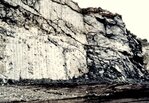


The Cell Signaling Technology project up at the old quarry near the MAC is making its way through the permitting process. Preliminary earth work has begun, including some test blasting which started last week.
Blasting is a highly regulated activity both at the state and local level. This article will shed some light on blasting oversight, including regulations, best practices, and safeguards employed here in Manchester. The Massachusetts Department of Fire Services, Division of Fire Safety administers 527 CMR 1.00 which is the regulation that applies to explosive licensing, permitting, storage, sales, use, transportation, and manufacturing. They are only one of many agencies, others include Alcohol, Tobacco and Firearms (ATF), Department of Transportation (DOT), and the Occupational Safety and Health Administration (OSHA).
The Manchester Fire Department is the local entity that issues the Permit to Blast. These permits are not issued lightly.
As Fire Chief, I ensure that conditions of 527 CMR 1.00 have been met, including but not limited to checking the Blaster’s Licenses, looking for any previous actions taken upon the blaster or blasting company as well as reviewing the blasting plan. One condition the Fire Department sets on all permits is that a Fire Department Detail (a member trained in Blasting Details) is present from when explosives arrive on the construction site until they are secured and removed.
Good things to know about blasting include:
A little information specific to the CST Blasting that has occurred so far: Seismographs have been placed on a few properties on Mill St as well as the MAC on Atwater Ave and the Brady Property on Beaver Damn Road. All structures within a 250-foot radius of the blast site have been afforded the opportunity of a Pre-Blast Survey. The readings have been as follows:
These readings compare quite favorably to daily activities:
The Manchester Fire Department is steadfast in its pursuit to provide a safe and healthy community, and this doesn’t waiver when it comes to blasting. I as your Fire Chief have personally been following and interacting with the public, their concerns, monitoring blasts/readings, and will continue to do so throughout this project. The blasting portion of this project will continue through August with an estimated one blast per day, Monday through Friday this is subject to change.
I will continue to work with residents, Cell Signaling Technologies and Maine Drilling & Blasting to ensure this project can move forward safely and meet the expectation of all involved.
If you have concerns, you can contact the Manchester Fire Department at fireprevention@manchester.ma.us or by calling 978-526-4040. Cell Signaling Technology has offered to answer any questions or address any concerns people may have about the project. For more information about the project or to contact a company representative you can visit CSTOldQuarry.com.